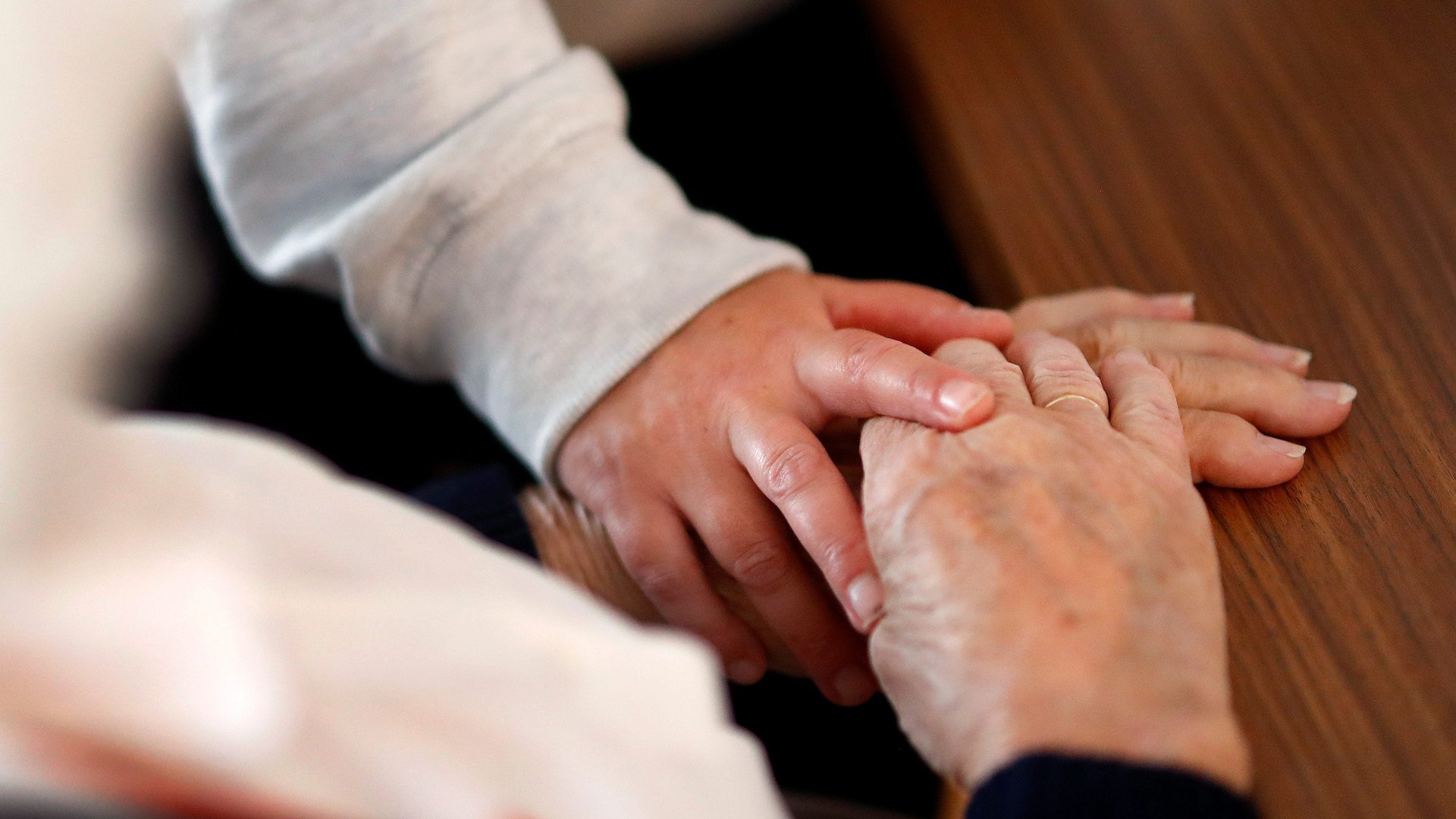How Care.com’s general manager handled her own caregiving crisis
Natalie Mayslich, the general manager of Care.com, is living the life of millions of working people who shoulder caregiver duties at home. In the past two years, she has cared for her mother through hospice, moved her aging father into her home, and looked after her three kids, including two toddler twins.


Natalie Mayslich, the general manager of Care.com, is living the life of millions of working people who shoulder caregiver duties at home. In the past two years, she has cared for her mother through hospice, moved her aging father into her home, and looked after her three kids, including two toddler twins.
The 35-year-old is keenly aware of how much more challenging life has become for people like her—especially working mothers—since the pandemic began. Recent research from McKinsey has shown that one in four women are now considering downgrading their jobs or leaving the workforce; for those with small children, that figure is one in three. In the US, most working parents and other employees who double as informal caregivers have long had to struggle through without paid family leave (though that may soon change).
The website, Care.com, is one of many private sector businesses filling a void created by a patchwork child care system in the US, though it also operates globally. The site connects customers with caregivers looking for work. People can search for full-time nannies, virtual or in-person babysitters, or in-home care for seniors and others. Since the pandemic began, in particular, Care’s enterprise arm, which serves companies looking to offer employees easier access to vetted child and elder care, has seen demand surge. Now the company is preparing to launch a more comprehensive daycare directory.
Mayslich spoke to Quartz about how employers are finally taking care benefits seriously, her caregiving history, and the advice she would give anyone who has faced similar pressures. The interview has been condensed and lightly edited for clarity.
Care.com was founded 15 years ago primarily to solve the child care crisis. It later added other “help” categories, like pet care and home repairs. Explain.
We found that child care customers and families looking for child care sought us out when they were also trying to solve other issues going on at home.
Often a housekeeper is the easiest way or the first step for a mom, and particularly a working mom, to feel comfortable bringing someone into the home—because we have such an emotional attachment to the idea of who takes care of our children.
Particularly with a first child, it’s a lot easier to introduce a housekeeper to take care of the house than it is to say, “OK, I’m ready to hire a nanny for my child.” It’s often in the entry path into child care.
Senior care is a more recent service, and that was also due to demographic changes within the US but also among our users. The families which were coming to us looking for child care 15 years ago are now coming back and looking for senior care.
You have described yourself as the “quintessential Care customer.” What does that mean?
I’m very much part of this sandwich generation where I have three kids—my oldest is six and I also have two-year-old twins—and now my dad is living with us. Before a few years ago, I was also caring for my mother and I was always asking myself: How do I do it all and have a career? And this was pre-pandemic, before we were really shining a light on this child care crisis.
I’m trying to solve this problem for families which look a lot like mine or for people who are entering a care crisis, because we all have them throughout our lives. I see my role as reducing friction and making it easier for so many families who are in crisis mode, because I’ve been there and you know, navigating through those incredibly complex care decisions is really, really hard.
What we’re constantly asking ourselves is how do we make this easier? How do we help guide families through the interview process so they can get someone into the home faster? How do we reduce that time that it takes to hire help or to find help? A lot of what we do and a lot of our mission is not just about helping families find care, but it is giving them that freedom and the control back into their lives.

What does “reducing friction” look like in practice?
It’s providing guidance. It’s being very clear about what we offer and why. It’s ensuring that families know whether or not they are qualified to receive some governmental care help.
Within senior care, there are a lot of families who raise their hand and say “I’m interested in senior living solutions,” but they don’t know that insurance generally doesn’t cover senior living solutions. Many families assume there is a social safety—that net that doesn’t exist by the way!—and are unprepared for how much it’s going to cost. They don’t know what care options exist.
What changed in the pandemic in terms of care, and how can companies support that going forward?
The pandemic shone a light on the problem. Now employers have a real view into the family lives of their employees as real people with real problems. And those problems come to work, too.
At the outset of the pandemic, we needed to understand, “how is the care landscape evolving? How are employers reacting to what’s happening?”
And what we found is interesting: First, employers are recognizing that there is a real need here and over half the employers that we’ve now surveyed are responding to the need for care benefits. In fact, our enterprise business has seen a rise in demand during the pandemic for care benefits for employees.
During the great resignation, or the great reshuffling, we’ve seen a lot of employees raising their hands and a large percentage of them saying, “I want to work for a company which values me as an individual, not just as an employee,” and what that often means is a family-friendly work environment with care benefits, with clear and honest and open communication around how to help navigate some of these problems.
Do you see any radical changes coming in terms of how those benefits are handled?
During the pandemic, clearly the senior population suffered more than others. There was a clear conversation around it, but the media narrative still often shifted towards the child care crisis. Still, we see more companies recognizing the need for senior care.
Who’s coming to your site more: men, women, both?
We primarily see women who are searching for care. We see it on care.com. We see it with our enterprise business or employer partners. We also see it in terms of sheer volume and workforce attrition that has happened during the pandemic, the number of women who have left the workforce because of these impossible care choices that folks, that women, have to make. It’s very clear that we haven’t yet reached equality in terms of the contribution or relative contribution of male and female work within the home.
But we do have more men who are using our benefits than we had 10 years ago. For child care, it’s primarily women who are coming. For senior care, we’re seeing it start to shift closer to 50/50.
What advice do you have for caregivers who are also working?
Use your voice, set boundaries at work, and be proactive and transparent about what’s happening at home in order to ensure that you are being recognized for the work that you’re doing, but also to set yourself up for success.
I learned that lesson from the pandemic. I also learned that lesson in my former role at IAC. I see a lot of women underestimating how important it is to open themselves up a bit more and be vocal about what they need to be effective at work.
In my former role, I didn’t share what was happening until I’d sort of reached a breaking point. I went to HR and I was like, “How do I do this? How do I manage through this? I don’t want to drop the ball at work. I cannot drop the ball at home with my kids. But I want to be there for my mom and I don’t have a lot of time. How does this all work?”
I got feedback and pointers that empowered me to go back to IAC and ask for a break. I was like, “I have just gone through six months of hell and I need time. I’m going to come back and I’ll come back stronger and I’ll come back with a bigger vision, but I’m burned out and I need that time and I need that space.”